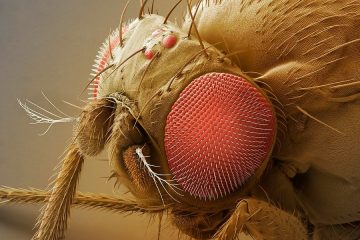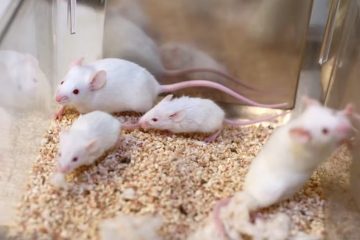What is a transgenic model?
Transgenic animal models are animals in which the genome has been edited to carry the genes or specific traits of another species. The genome is being edited by introducing the DNA of another species by using artificial methods such as microinjecting DNA into the pronuclei of a fertilized egg, inserting DNA into embryonic stem cells that are microinjected into a developing embryo, or infecting the embryo with a virus that carries the DNA of interest.
Who is the Western Clawed Frog?
Frogs have been used as animal models for a long time, as their physiology is simpler when compared to mammals. Although frogs and humans are genetically different animals, they have a similar tetrapod heritage that is closer to the evolutionary history of bony fish. The frogs of the genus Xenopus have been used in research for decades, with most research done on Xenopus laevis. Its sister species, Xenopus tropicalis, also known by the name Western Clawed, has been used in research as an animal model only recently. Compared to Xenopus laevis, it has a simpler genome, a faster life cycle, and a smaller size, making it more advantageous to use it in research. They have small heads, no eyelids, powerful hind limbs, completely webbed toes with claws, and little front limbs. It is easily bred, as it can produce thousands of offspring from a single clutch of eggs. It is the only species of the genus Xenopus that has a diploid genome, which makes it ideal for genome editing. Xenopus tropicalis was the first amphibian genome to be sequenced in 2010 and thus used in genome studies. About 80% of human disease genes have an equivalent in the Xenopus tropicalis genome; thus, it is widely used in genetic studies due to its close evolutionary relationship with humans.

Which studies are they used for?
Western clawed frogs are widely used as model organisms to study vertebrate biology, genetic, biochemical, and environmental factors that influence development, and cell and molecular biology research. Also, they have been used to study different human diseases as a human disease model.

Diseases related to the Nervous system
In Alzheimer’s, the level of the neurotransmitter acetylcholine is low in the hippocampus and neocortex of the brain, which are involved in signal transduction. In studying nervous system diseases, two main methods are used: oocytes are used to study the function of mutant receptors and ion channels, and embryos are manipulated to study neurodevelopmental disorders. Through the use of these techniques, research has shown that the cell membranes from post-mortem Alzheimer’s patients’ brains can integrate into the plasma membrane of Xenopus oocytes while retaining their voltage-gated and neurotransmitter functions. This has allowed researchers to find different causes and treatment methods for Alzheimer’s.

Genetic disorders
Cystic fibrosis, which is an autosomal recessive disease, is caused by variants in the CFTR gene, which codes for the CFTR ion channel involved in the movement of chloride ions. This involves maintaining the fluid flow across the membranes of organs such as the lungs, intestine, and pancreas. The oocyte of Xenopus has been used in studies to functionally analyze human nucleotide polymorphisms (SNPs) in particular the Cystic Fibrosis modifier gene, which encodes for an anion channel involving exchanging chloride and bicarbonate.
Mental health disorders
Xenopus embryos have been used for the study of Fetal Alcohol Spectrum Disorder (FASD) and Fetal Alcohol Syndrome (FAS), which are mental health disorders caused by the exposure of alcohol to a fetus before birth. This affects the development of the fetus due to the passage of alcohol to the baby through the mother’s placenta. The Xenopus embryos were exposed to different concentrations of alcohol at different time points to understand its effects. It was found that the greatest effect was during the gastrulation period, which is a critical process that happens in week 3 of embryonic development. The axial patterning and initial induction of the central nervous system were disrupted as well.
Early embryonic developmental studies
These species are used for early embryonic developmental studies as the frog embryos are assayable throughout their development. Furthermore, their ability to fertilize externally and the transparency of the embryo enhance the ease of observation as well as to alter their genome. The molecular and cellular processes that are involved in gastrulation, neurulation, and organogenesis are well-studied using these model organisms. As a result of their ability to manipulate the genomes of these species using techniques such as CRISPR/cas9, they are also used in research involving gene expression and tissue differentiation.
Regeneration and tissue repair studies
Xenopus species can regenerate tissues and organs, of which the molecular and cellular mechanisms are studied to produce regenerative medication for humans. Due to the genetic similarities of Xenopus species to humans, these investigations are expected to produce fruitful results and enhance the regenerative abilities of humans and other species.
Benefits and limitations of using Xenopus sp
Using Xenopus frogs is advantageous. They are easily bred, and the maintenance of the species in laboratory conditions is convenient. They are extensively used for early embryonic development studies because the embryos develop outside the body and can be altered using techniques such as CRISPR/Cas 9, based on the experimental requirements. Their eggs are large and have a high growth rate, which ensures the development of the egg into a tadpole within a few days, enhancing the efficiency of the experiments. These species lay an abundance of eggs, providing a substantial sample size to carry on the experiments. Xenopus frogs can regenerate their organs, which enables the utilization of this property in studying the repair and regeneration of the organs. Due to their genetic similarity to humans, they are used for research on various human diseases.
Along with the benefits, there are also limits to utilizing these species as model organisms. The data available on these Xenopus species is comparatively limited; hence, they are not well studied. Furthermore, X. laevis has a comparatively larger genome due to the duplications of the chromosome, which makes the utilization of these species for research purposes difficult. Xenopus species have a long generation time. Therefore, producing a colony with stable genetic variations is difficult, causing the research period to be extended.
Despite the limitations, the contribution of these species to the modern sciences is immensely acknowledged.
Written by:
Dilki Subawickrama and Bihara Ganegoda
3rd Year Undergraduates
Immunology and Integrative Molecular Biology Hons.
Faculty of Science,
University of Colombo.
References:
- Blum, M., & Ott, T. (2018). Xenopus: An undervalued model organism to study and model human genetic disease. Cells, Tissues, Organs, 205(5–6), 303–313. https://doi.org/10.1159/000490898
- Grainger, R. M. (2012). Xenopus tropicalis as a model organism for genetics and genomics: Past, present, and future. In Methods in Molecular Biology (Vol. 917, pp. 3–15). Humana Press.
- Nenni, M. J., Fisher, M. E., James-Zorn, C., Pells, T. J., Ponferrada, V., Chu, S., Fortriede, J. D., Burns, K. A., Wang, Y., Lotay, V. S., Wang, D. Z., Segerdell, E., Chaturvedi, P., Karimi, K., Vize, P. D., & Zorn, A. M. (2019). Xenbase: Facilitating the use of Xenopus to model human disease. Frontiers in Physiology, 10. https://doi.org/10.3389/fphys.2019.00154
Image Courtesy:
- Title Image: https://biturl.top/BjEjEj
- 1st Content Image: https://biturl.top/ANFVNj
- 2nd Content Image: https://biturl.top/7F7Zz2



0 Comments